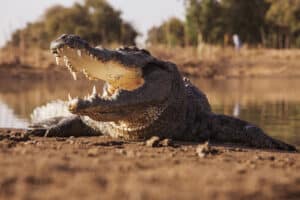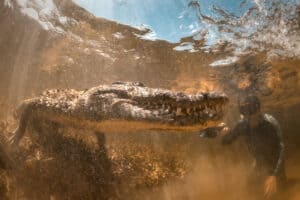Crocodiles and alligators are usually the apex predators in whatever environment they live in. Their massive jaws and armored bodies are the perfect weapons system against potential prey and foe alike. Today, many species of crocodile exist within the taxonomical group, with some being larger than others.
As with other animals, however, a fossil is occasionally dug up that challenges all we know about these apex reptiles. This fossil of the largest sea-dwelling crocodile ever found may just be the perfect example of just that.

Enter: Machimosaurus rex.
This ancient crocodile was larger than a great white shark
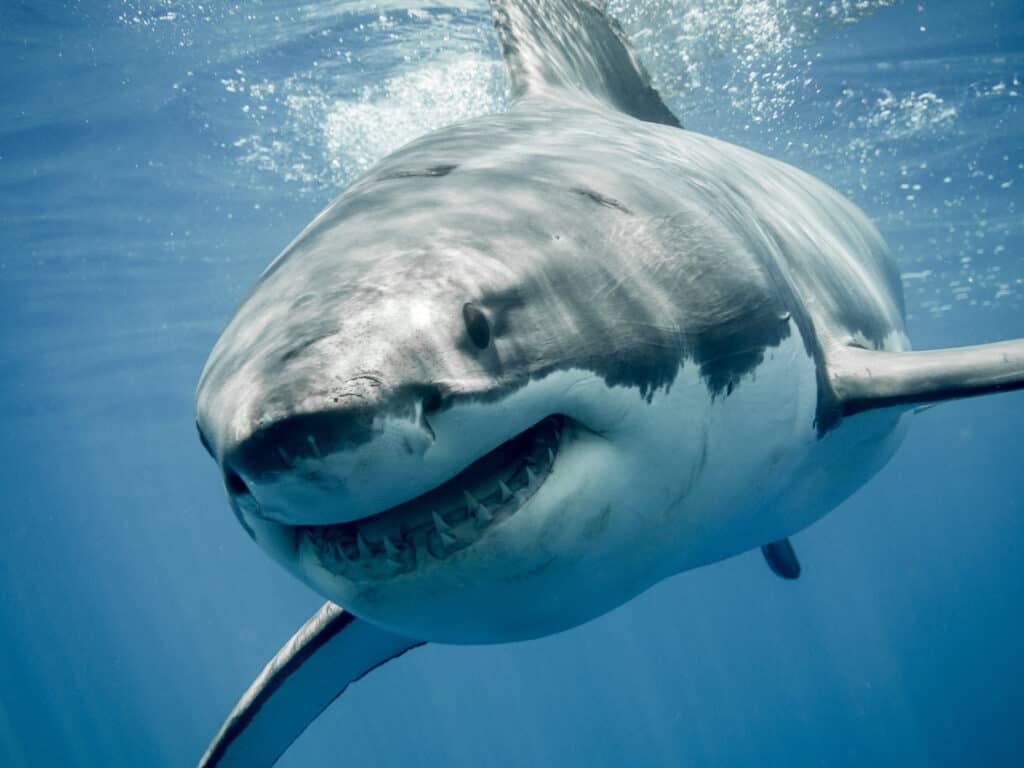
The ancient crocodile species,
Machimosaurus rex, was the largest marine crocodile – longer than a
great white shark
– and one of the largest crocodylians to ever live.
©Ramon Carretero/Shutterstock.com
Machimosaurus rex is the largest thalattosuchian (marine crocodile) to have ever lived.
Crocodiles haven’t changed all that much in the millions of years they have been around. Generally, the largest changes that happen through the ages aren’t in appearance or special ability, but in sheer size. For Machimosaurus rex, that is certainly the case. Machimosaurus rex was a prehistoric crocodile that scientists recently discovered in the modern-day Sahara Desert.
Considered a sea-dwelling crocodile, Machimosaurus rex was one of the largest crocodiles to have ever lived. In fact, the researchers who discovered the fossils only had one word to describe it: “Massive.”
Federico Fanti and his team were the ones to discover the prehistoric crocodile. While searching through ancient sandstone in a region known for its rich fossil deposits, the team struck gold. Well, they struck a skull, to be more specific.
Machimosaurus rex belonged to a group of machimosaurid crocodyliforms (crocodile-like in appearance) creatures. Additionally, it was the largest known teleosauroid and thalattosuchian creature to be named. The thalattosuchians were a group of sea-dwelling crocodiles that are commonly referred to as marine or sea crocodiles.
Even with all the complicated naming, all that’s really important is just how big this croc was!
Just how big was Machimosaurus rex?
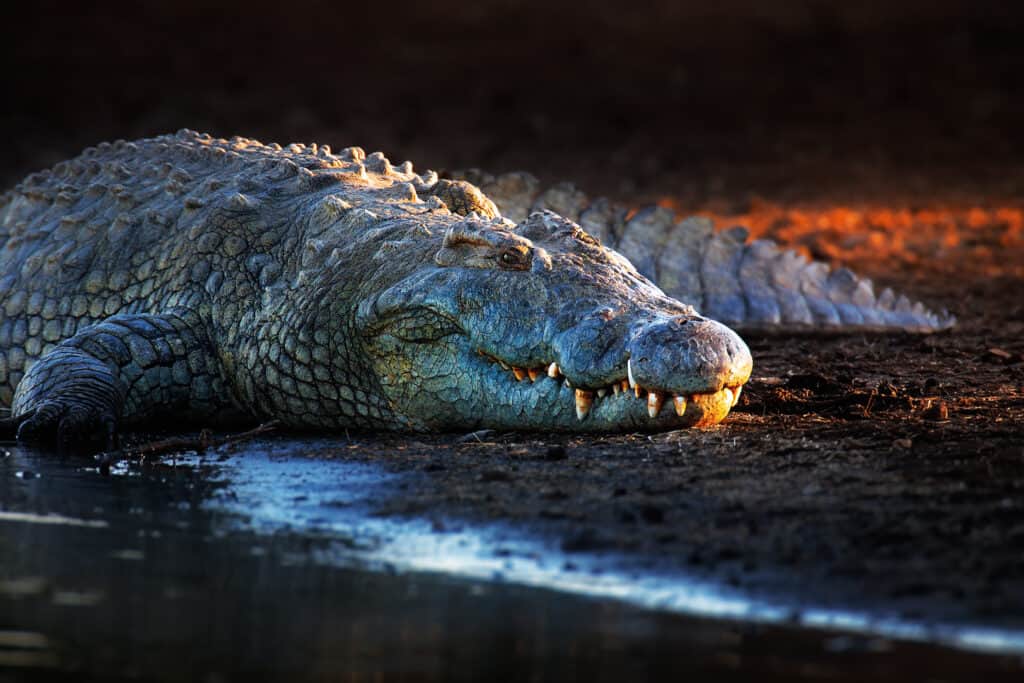
would have been significantly larger than today’s crocodiles
©Johan Swanepoel/Shutterstock.com
When researchers discovered the first fossils of Machimosaurus rex, they were shocked. The first part of the skeleton that the team stumbled upon was the skull, and upon its unearthing, was measured to be over five feet long.
Once the digging began, the researchers were able to put the skeleton together to get an estimate of just how big Machimosaurus rex was. Using their measurements, they estimate that the mega-croc would have measured over 30 feet long and weighed around 3 tons. As Federico Fanti describes:
“It’s just big. It’s almost the size of a bus.”
Washington Post
With a size like that, it’s no wonder that the researchers believe the croc to have been at the apex of the food chain. If it was able to get a hold of something, it likely would have been able to eat it. Additionally, it would have had few predators that could seriously threaten it. For reference, the average size of a great white shark is between 13-16 feet, with a weight between 4,200-5,000 lbs. The monster croc would have been around double that size.
Where was Machimosaurus rex found?

The first fossils of Machimosaurus rex were discovered in the Sahara
Desert
, although it would have been a lagoon millions of years ago.
©Anton Petrus/Shutterstock.com
The fossils of Machimosaurus rex were found in modern-day Tunisia within the Sahara Desert. Although today’s Sahara region is dry and nearly devoid of large life, that wasn’t always the case. During the Jurassic era, when Machimosaurus rex was alive, the region was likely a lagoon.
Using geologic data, the researchers believe that the lagoon that Machimosaurus rex would have lived in was facing the ocean. More evidence of this marine environment is clear, as fossils of turtles and other fish were also in the area around Machimosaurus rex.
As a marine crocodile, Machimosaurus rex would have likely hunted in the water and was probably an ambush predator or scavenger, just like many other crocodiles today. Additionally, they had big heads with short teeth, meaning that they were designed for big bite forces and less for penetration. The ideal food for Machimosaurus rex would have been large bony fish and giant turtles. A close comparison is the modern-day American alligator. American alligators have shorter, broader snouts that are better designed for harder prey. With a more condensed mouth, they are able to crush turtle shells whereas the American crocodile has to rely mostly on mammals for prey.
Why did Machimosaurus rex go extinct?
For a long time, scientists thought that a global extinction event between the Jurassic and Cretaceous periods killed off creatures like Machimosaurus rex, but that didn’t seem the be the case. In fact, the fossils show that Machimosaurus rex lived well after this supposed extinction.
Although it isn’t certain, most scientists agree that the Machimosaurus genus, including Machimosaurus rex, died out around 130 million years ago.
What is the largest crocodile today?
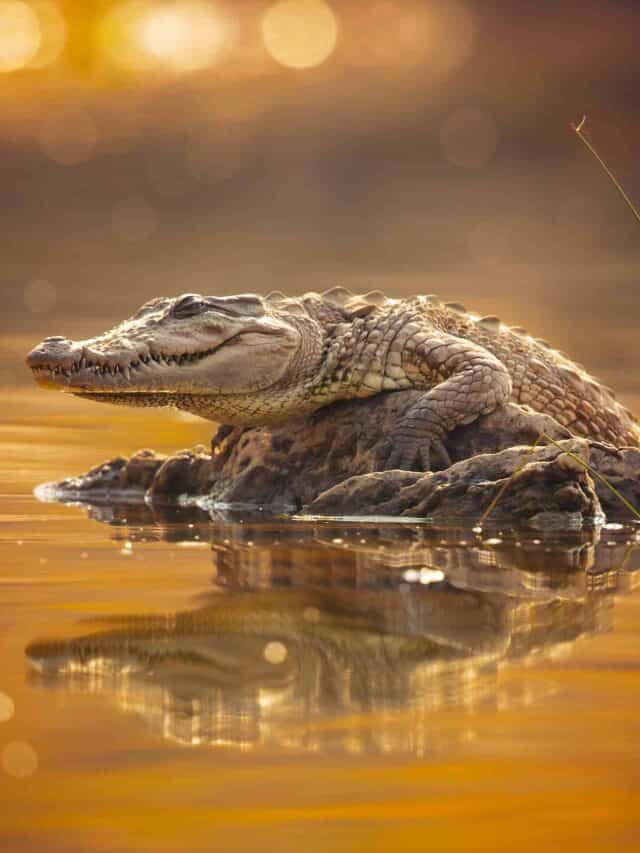
The
saltwater crocodile
is the largest crocodile in the world today.
©Milan Zygmunt/Shutterstock.com
Although Machimosaurus rex was the largest species of crocodile within its genus, it isn’t around today. Even still, there are some prehistoric giants that are alive and well today! The largest living member of the Crocodylia family, as well as the largest living reptile in the world, is the saltwater crocodile.
Saltwater crocodiles are massive creatures that are native to Southeast Asia and Australia. Like the Machimosaurus rex, these crocodiles are marine-dwelling, if only a bit smaller. They generally grow up to 20 feet long and weigh between 2,200 and 2,900 lbs.
What Other Animals Live in Tunisia?
Tunisia is home to a plethora of wildlife, including some animals that might not be found in other African countries. Wild boars, jackals, and hyenas can all be spotted across the countryside, while much more peaceful creatures such as gazelles and hares are also present. The Tunisian wilderness is also home to some dangerous reptiles, such as the horned viper and cobra.
Tunisia is home to many mammals, such as the Barbary sheep and African wildcat, reptiles like the Tunisian fringe-toed lizard and common chameleon, amphibians like the Mediterranean tree frog and spur-thighed tortoise, birds such as the North African ostrich, Eurasian hoopoe, and Barbary partridge, and fish species like the Atlantic bonito. Additionally, Tunisia also has an array of invertebrates, including scorpions, spiders, and beetles. All in all, this makes Tunisia a unique place for animal lovers to explore!
Where is Tunisia Located on a Map?
Tunisia, also known as the Republic of Tunisia, is situated in the northernmost part of the African continent. It is located in the Maghreb region of North Africa, with its western and southwestern borders shared with Algeria, while Libya is situated to the southeast.
Here is Tunisia on a map:
The photo featured at the top of this post is © Johan Swanepoel/Shutterstock.com
Thank you for reading! Have some feedback for us? Contact the AZ Animals editorial team.





